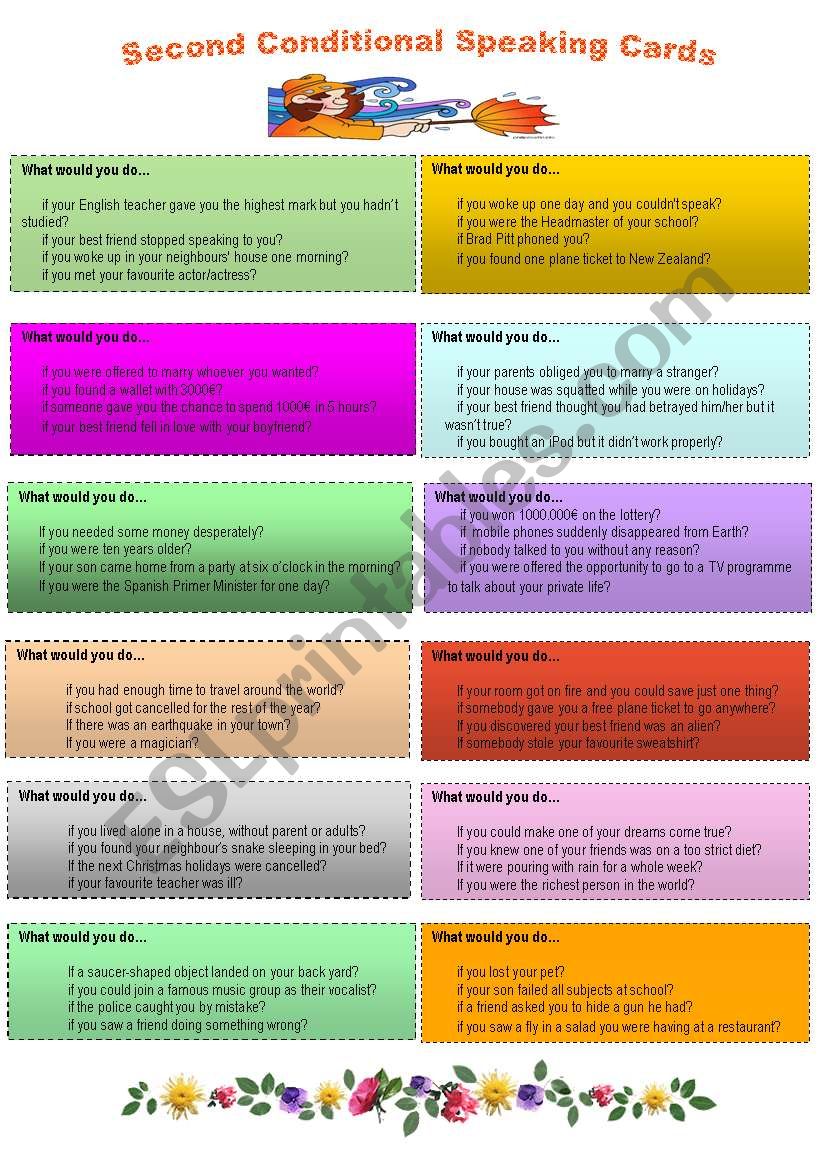
Most native speakers can use conditionals in natural speech, but they often use them “incorrectly” and would be hard-pressed to explain the grammatical underpinnings of their speech. However, even native English speakers often have a very tenuous grasp of grammatical concepts like conditionals. I do hope it’s helped convince you of the importance of teaching your students to use conditionals, though. Know your enemyĭon’t worry, I won’t play any more grammar tricks on you by leaving conditionals lurking throughout this post. In fact, if you have been paying attention, then you’ll have seen that this whole paragraph-including this sentence-is written using conditionals. When you start to recognize that conditionals aren’t just mathematical or scientific formulas, but rather natural and critical parts of the language, then you can more easily convey their importance to your students. If your students can’t use conditionals, it will be nearly impossible for them to talk about hopes, wishes, consequences, regrets and dreams. If you actually think about it and look around a bit, you’ll see that conditionals are everywhere.

Even if it didn’t have flashing lights around it, you probably noticed that heading is a conditional sentence. If your students don’t learn conditionals, they’ll be missing a crucial piece of the puzzle So what changed? The first thing was that I had to accept how important conditionals actually are. However, these days conditionals are actually among my favorite topics to teach in my ESL classes. In those days, I’m sure it was boring and tedious for them, since it was boring and tedious for me. Like many new teachers, I probably fell into the trap of teaching conditionals as dry formulas that students had to regurgitate in exactly the right way. So I also thought, “Ugh, grammar,” when I saw things like conditionals on the curriculum.Īnd no wonder: As a native English speaker, I used conditionals all the time, but I had never had to teach them and explain how they worked. When I first started teaching ESL, I could hardly explain the difference between a preposition and a participle. (Download) Getting Over the “Ugh” Factor with Conditionals It’s really not that bad
#Conditional clauses speaking activities for students pdf#
This blog post is available as a convenient and portable PDF that youĬlick here to get a copy. It’s not even as hard as pulling a rabbit out of a hat. You can leave your students entertained, inspired and with a fresh outlook on the language. What’s more, you can inject humor, wit, history, philosophy and popular culture into fun activities involving conditionals. You can easily teach conditionals without coming across as an insufferable English nerd or a joyless grammar tyrant.

My mission today is to dispel the myth that teaching this part of grammar has to be a struggle. The right approach to conditionals can transform grammatical theory into practice right before your students’ eyes. Hard work and keen focus, along with proper guidance, can turn an obligatory skill into magic. It’s not easily visual like vocabulary, and it’s not automatically engaging like speaking and listening.Īnd when it comes to more advanced grammar topics-like conditionals-then sometimes even we language teachers join the chorus of complaining students.īut what if conditionals could be more than just a skill your students have to learn? What then? Nobody normally gets excited about learning grammar. Let’s put our cards on the table, shall we? FebruWishes and Dreams: Making Conditionals Magic in ESL Class


 0 kommentar(er)
0 kommentar(er)
